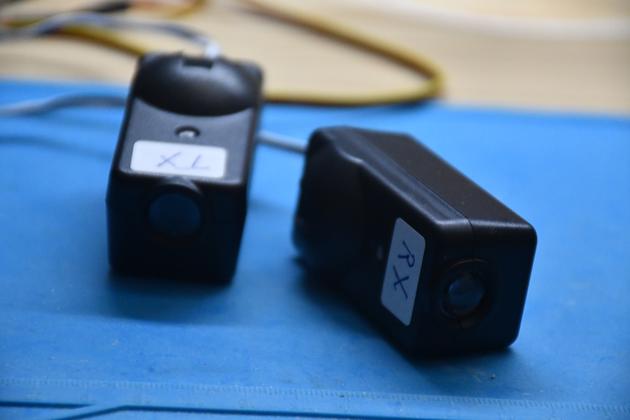
| 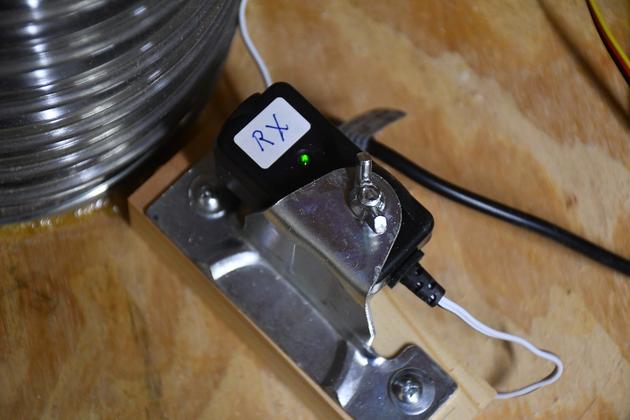
| 
|

| 
| 
|
After trying twice before and having unhappy results, here we go again. I've noticed most of the folks on the web have begun using garage door safety beam detectors. I bought a Werhoo 41A5034 Safety Sensor Kit from Amazon. After a little testing, I discovered they run on 5 volts which works well with Arduino pulsein() function. When the beam is not blocked the scope sees a period of 5760 Us (168 Hz) negative pulse output, and when the beam is blocked a 4Volt DC level. The pulsein() function sees the pulse train and returns the width of the pulse in Us. If there is no pulse train, pulsein() returns zero. Initially I decided to leave the E18-D80NK in place and have a redundant system.07/20/24: Page Origin
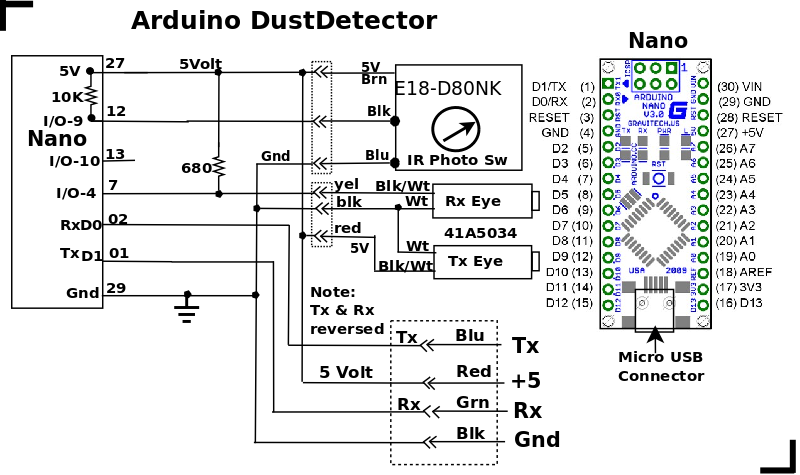
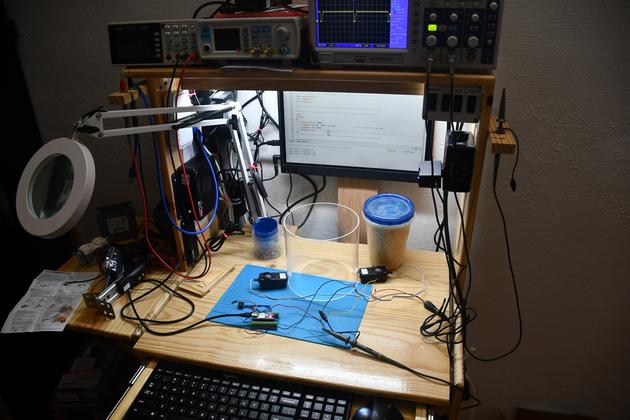
| My electronics testbench with the Safety Beam detector breadboarded. You can see the monitor at the back of the hutch, the computer is a Beelink mini pc attached to the left vertical of the hutch, the keyboard is on the pullout at the bottom. |
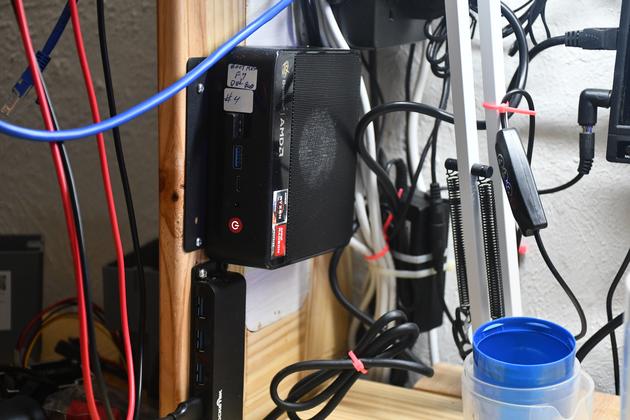
| The BeeLink mini-pc, attached to the left side of the hutch. It runs Ubuntu 22.04. |
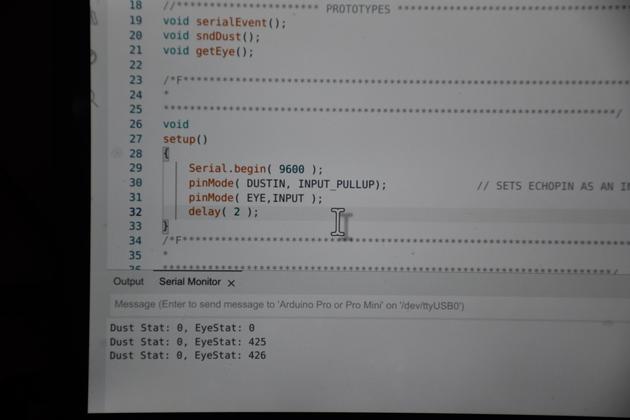
| Adruino IDE on the monitor, showing the sketch's setup() code. |
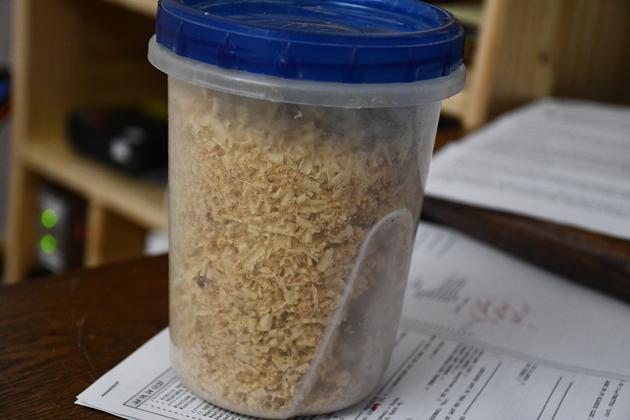
| The container of sawdust used to block the beam. |
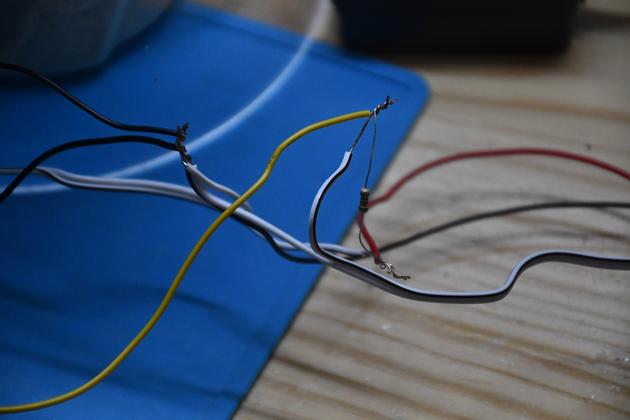
| Here is the 680 ohm pull resistor for the receiver. |
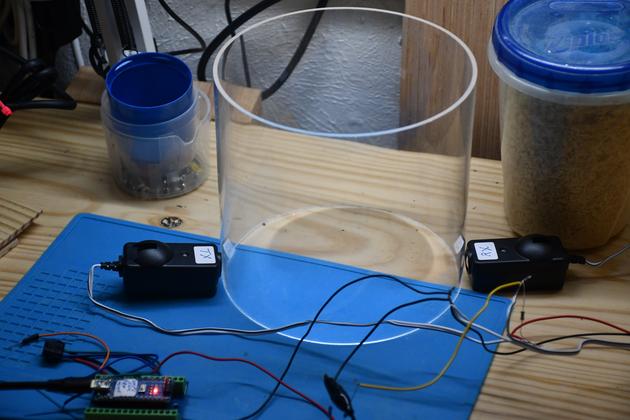
| The transmitter on the left and receiver on the right looking through a clear 6" diameter pipe similar to the flex tube below the cyclone to the dust bin. |

| The scope showing the Sensor's output with nothing blocking the beam. |
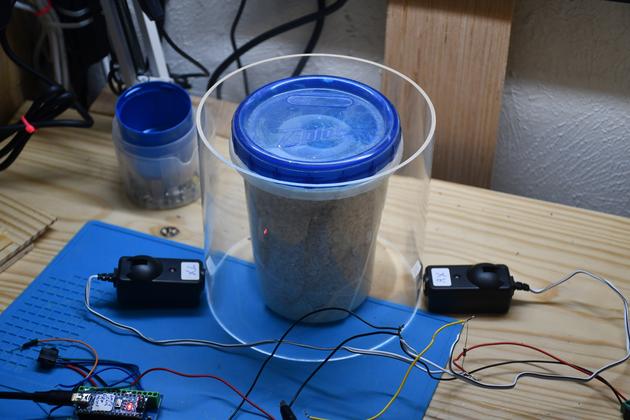
| The beam blocked by sawdust. |
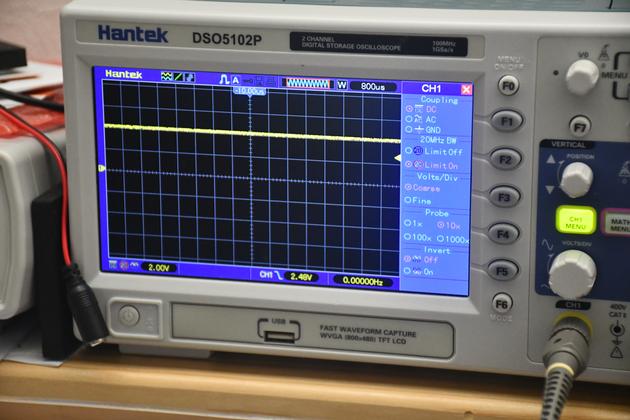
| The scope with the beam blocked by a clear container of sawdust showing a 4 V DC level. |
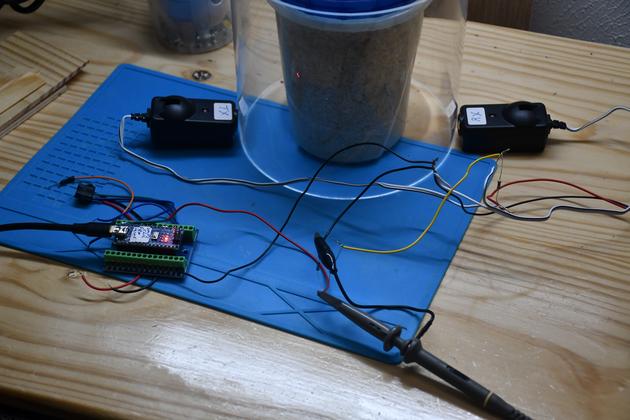
| A little better look at the lashup, note the Nano lower left.. |
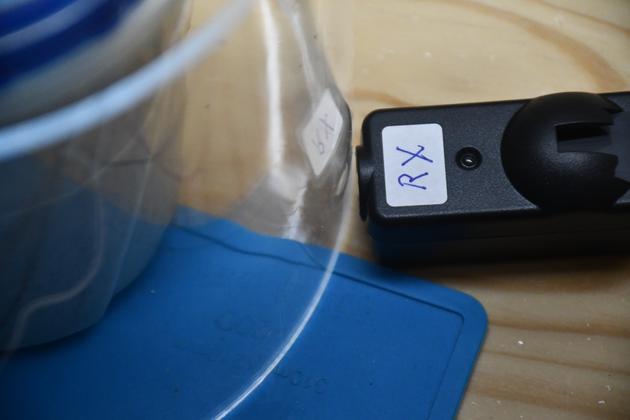
| A close look at the receiver with the beam blocked, no LED. |
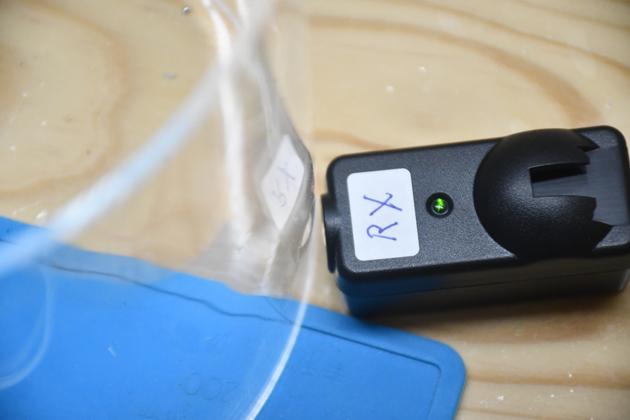
| The receiver's LED, green with no blockage. |

| The Werhoo 41A5034 pair from Amazon. |
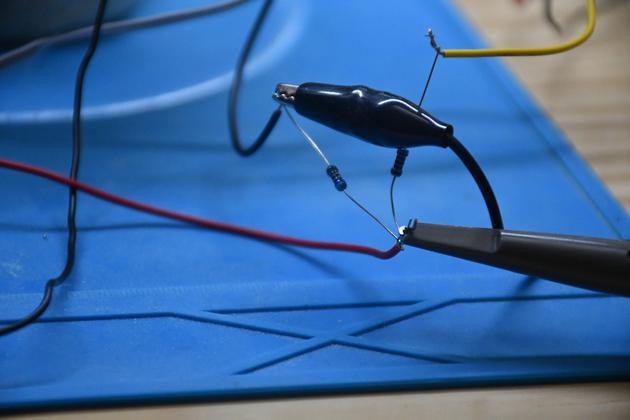
| Originally, I tried the beams on 9 volts, here is the 50/50 step down for the receiver output to the Nano. |
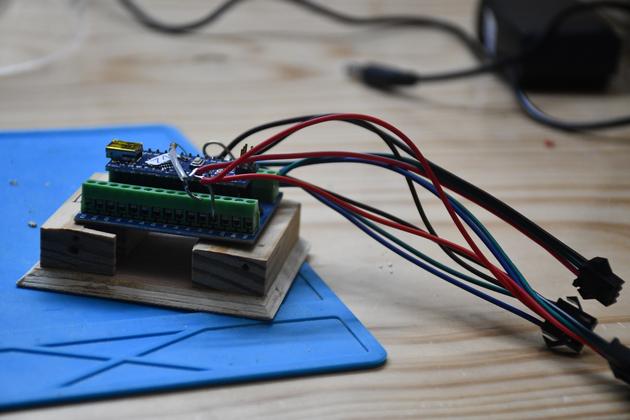
| The Dust Detector Nano, wired up and ready to go. |
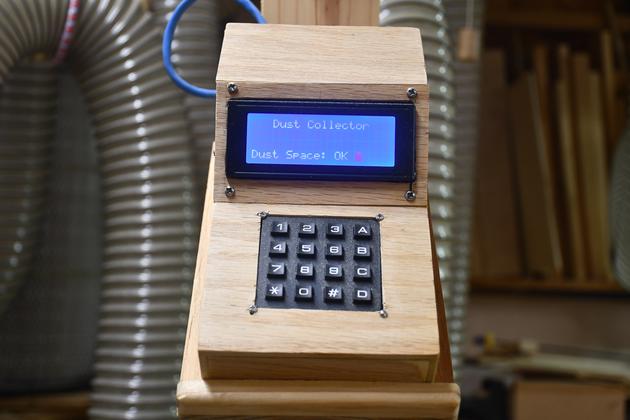
| The termanal indicating Dust Bin Not FUll. |
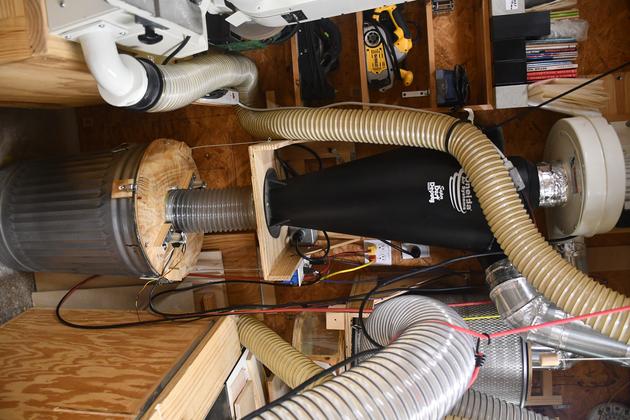
| Top-down: the blower, cyclone, and dust bin. |

| Closer pic showing cyclone and dust bin. |
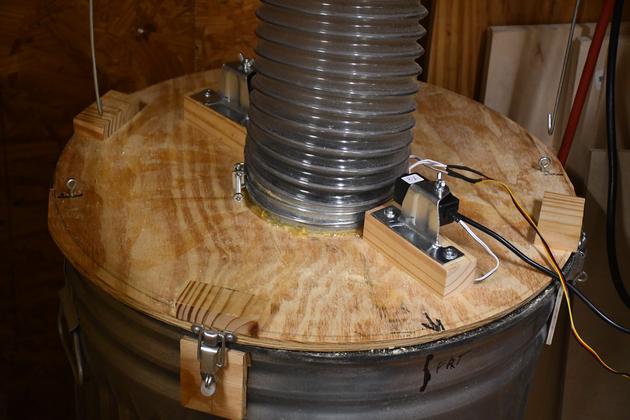
| Dust bin cover, the rx Eye (sensor) in front, the IR sensor is just behind the Eye. |

| Closer look at the top of the Eye (rx sensor), you can see the green LED is on, meaning no dust in the tube. |
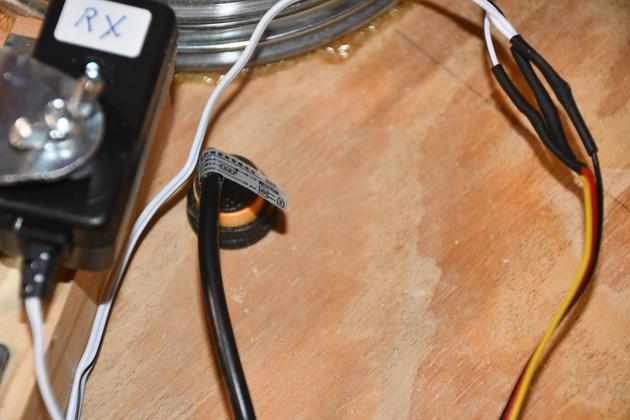
| The Dd2 IR device, behind the Eye (RX sensor). |

| Both Eye Beam devices, on opposite sides of the 6" flex |
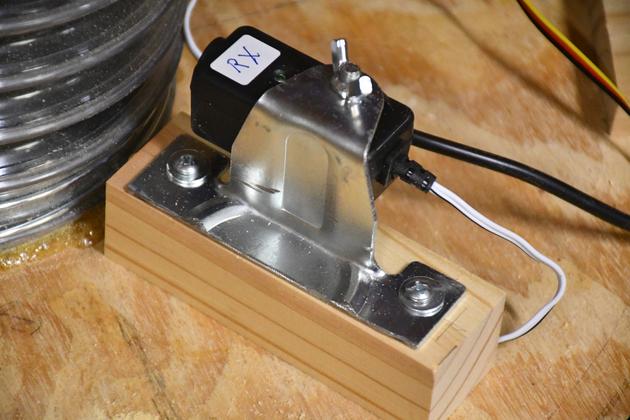
| Kind of a side view of the Eye. Note both devices mounted on a 1-1/2 " block, to make sure it is above the metal colar inside the 6" flex. |
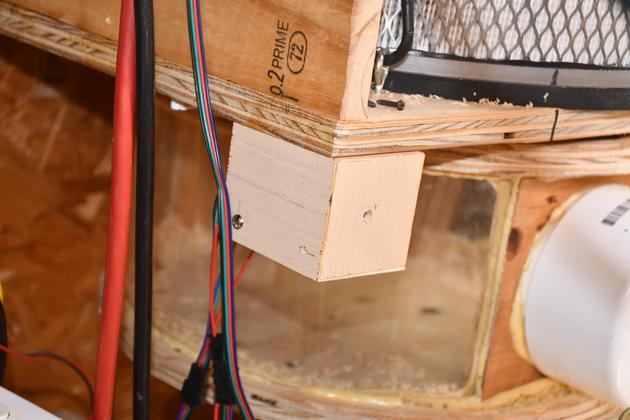
| The Nano's hiding place, under the filter and clean-out box's shelf. |
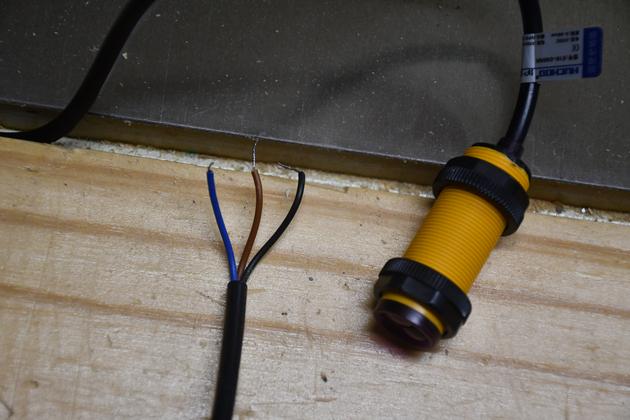
| DD-2 detector device. |
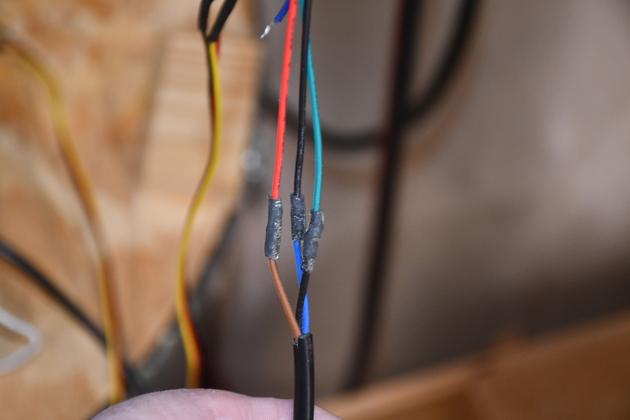
|
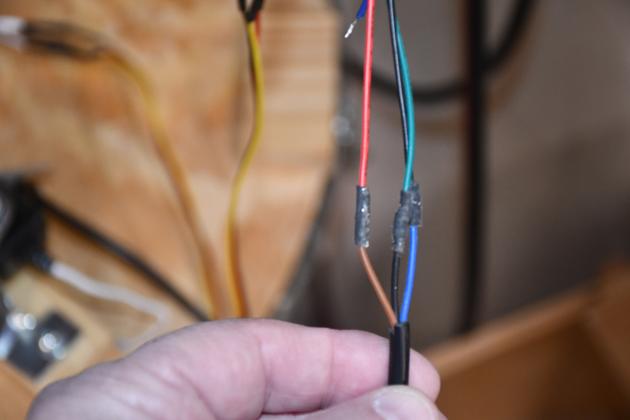
|

|